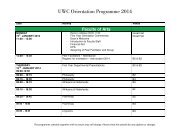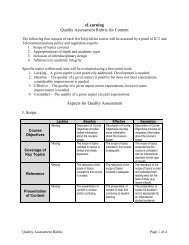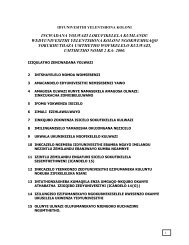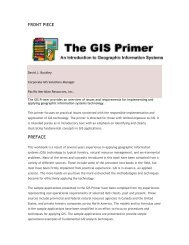Ecosystem Guidelines for Environmental Assessment
Ecosystem Guidelines for Environmental Assessment
Ecosystem Guidelines for Environmental Assessment
You also want an ePaper? Increase the reach of your titles
YUMPU automatically turns print PDFs into web optimized ePapers that Google loves.
ANDREW BROWN<br />
COASTAL<br />
The biophysical dynamics associated with<br />
coastal land<strong>for</strong>ms need to be understood in<br />
development planning.<br />
What are the critical things to maintain in terms of managing these<br />
systems <strong>for</strong> biodiversity, and ensuring its persistence<br />
Avoid developments that may impede seasonal cycles of sediment deposition (summer) and erosion (winter).<br />
Maintain and restore, if invaded by rooikrans, unimpeded sand mobility corridors (including headland<br />
bypass and climbing-falling dunes).<br />
Indigenous vegetation structure and successional dynamics (including that of primary and <strong>for</strong>edunes,<br />
and in dune slacks) must be maintained.<br />
A functional corridor of indigenous vegetation must be retained along the coast to link inlandtrending<br />
river systems. This is crucial <strong>for</strong> the migration and dispersal of plants and fauna.<br />
Decomposition processes at the high water mark and on the back beach should be maintained by<br />
confining the removal of drift kelp and other organic material to popular bathing beaches.<br />
Minimise disturbance of shore birds by people and dogs at important breeding, feeding and roosting sites.<br />
What, if any, reliable indicators could be used in monitoring ecosystem<br />
health, as related to key vulnerabilities<br />
Mobility of the sand.<br />
Shore bird species composition and abundance.<br />
Shorebird breeding success (number of hatchlings fledged per annum).<br />
Species composition and abundance of intertidal beach macrofauna.<br />
Density and extent of indigenous and alien dune vegetation cover.<br />
How reversible are impacts over a 5 – 10-year period<br />
In the case of disturbance that does not result in fixed infrastructure, 80-100% <strong>for</strong> most sandy-beach<br />
and dune habitats (excluding sand <strong>for</strong>est communities).<br />
Damage is irreversible if coastal environments are destroyed as a result of developments.<br />
Rehabilitation of eroded areas as a result of destruction of vegetation can be expensive. Recovery<br />
is very slow as vegetation must go through several succesional phases to reach maturity. In most cases,<br />
recovery to the climax phase will take 10 years and longer.<br />
What are acceptable trade-offs, compensation or off-sets<br />
<strong>for</strong> biodiversity loss<br />
There are none.<br />
SANDY BEACHES & DUNE SYSTEMS : 31
















